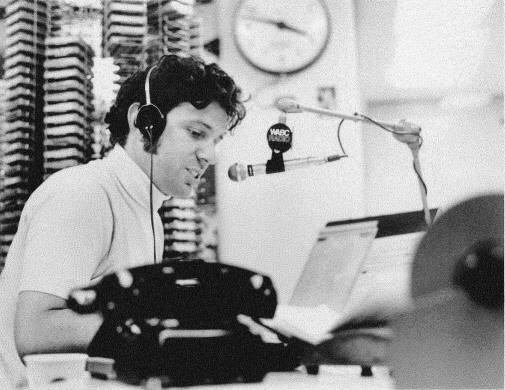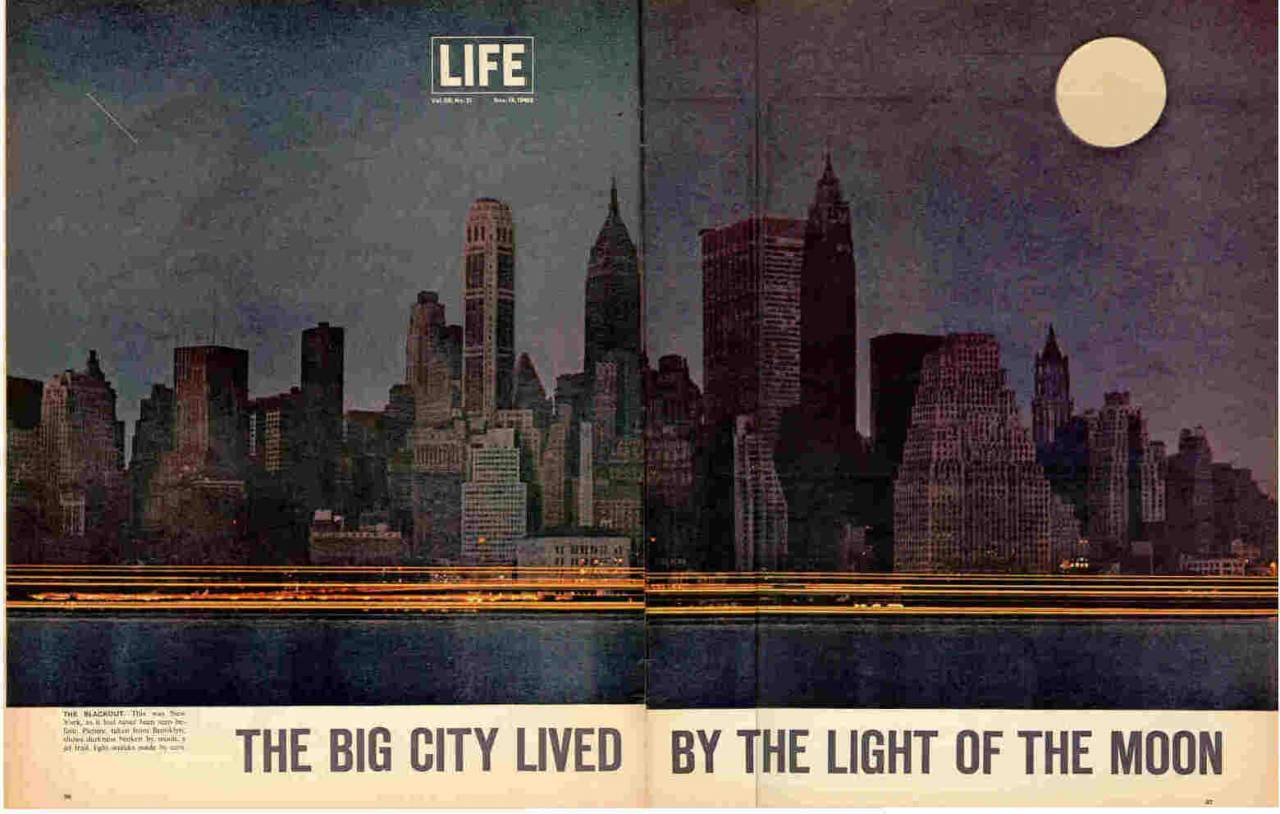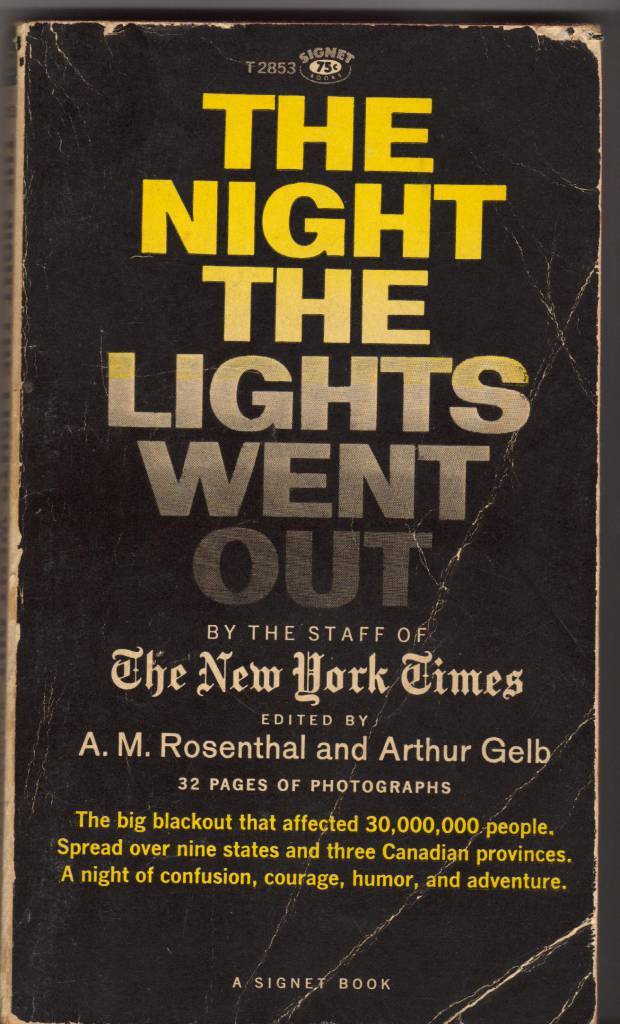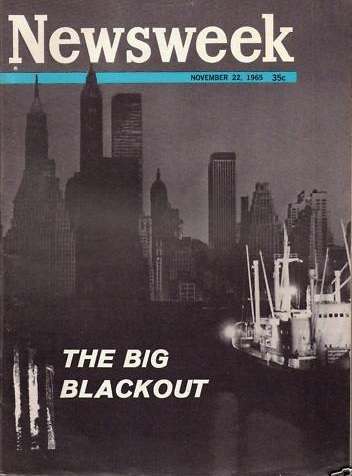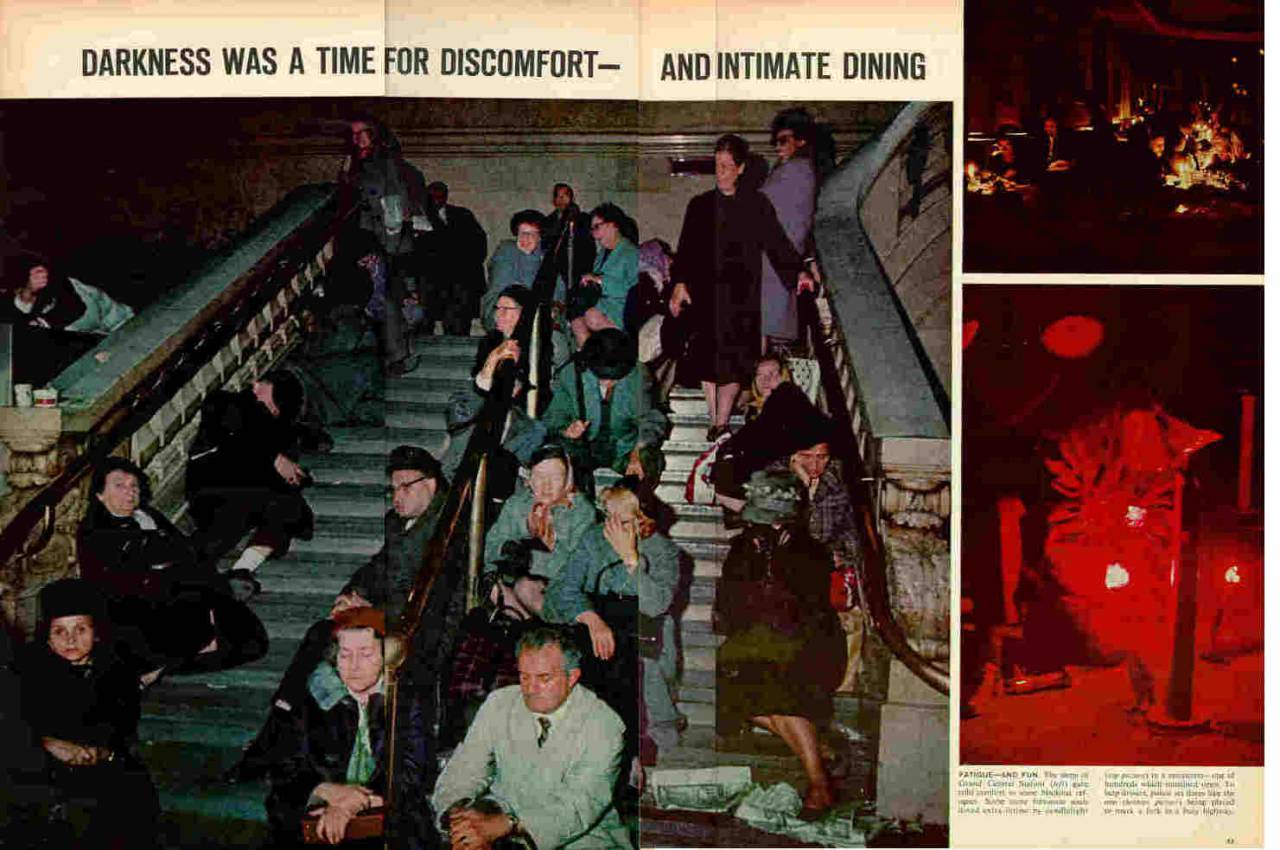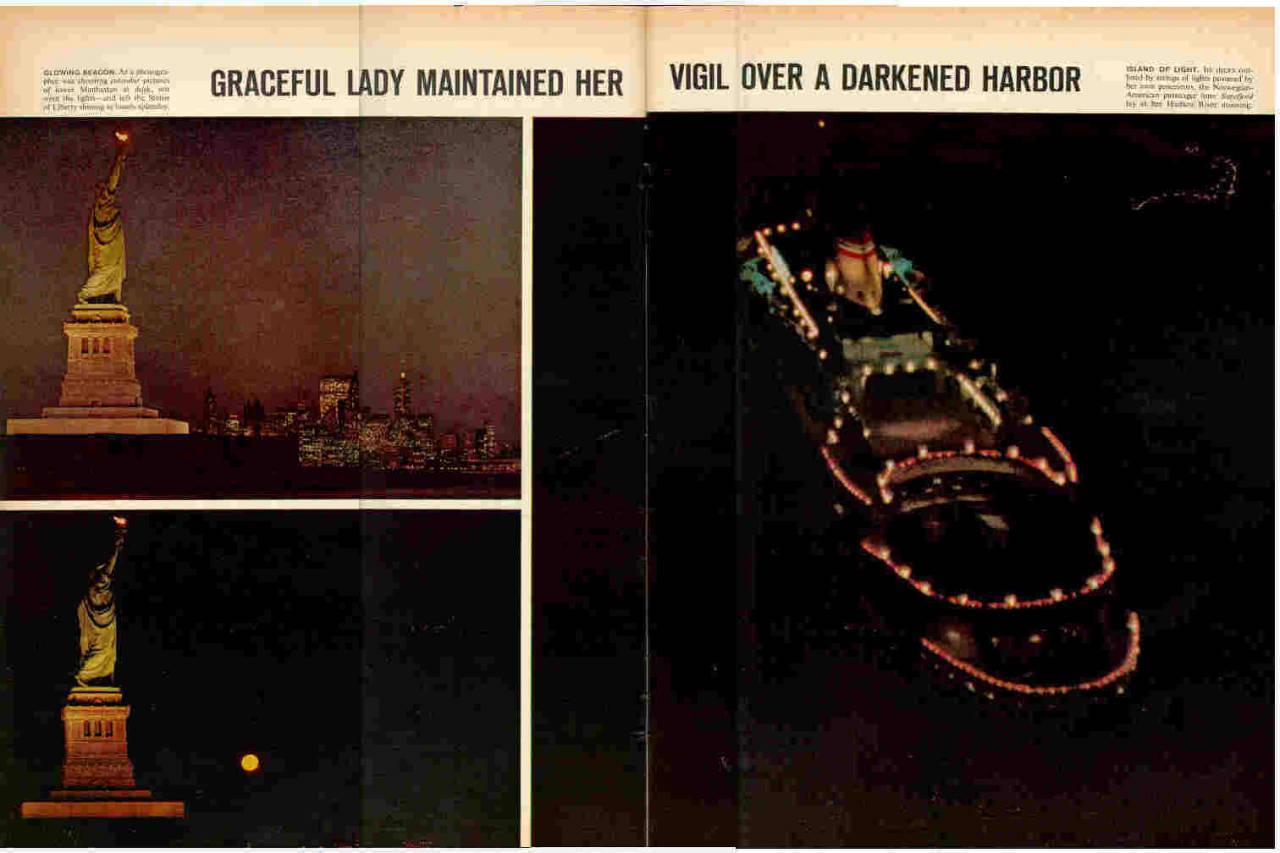“Lindbergh didn’t know it, but when he was describing flying across the Atlantic he was actually describing doing a disk-jockey show. Moments of stark terror interrupted by long periods of utter boredom” – Dan Ingram
On November 9, 1965, a massive blackout plunged 80,000 square miles in the Northeast United States and parts of Canada into darkness. Dan Ingram was a DJ on NYC radio station 77 WABC.
Before we hear his broadcast, we need to set the scene. West Island Weather has more:
Over 30 million people were affected including some provinces in Canada. Everything went dark. Patients in the middle of surgery, people in subways were trapped in darkness from New York to Canada and most states in between. A plane was getting ready to land when the runway disappeared. 1700 Passengers from a powerless subway train were rescued from a bridge in New York. The only light source was from the full moon and vehicles.
There was panic and concern of a possible Soviet attack. This was considered one of the greatest threats to national security since we were just getting over the brink of nuclear war with The Soviet Union and The Cuban Missile Crisis a couple years back and our president was assassinated. National paranoia was at a peak.
![[Image: From The Night the Lights Went Out by the staff of the New York Times]. Via](https://flashbak.com/wp-content/uploads/2015/10/lights.jpg)
From The Night the Lights Went Out by the staff of the New York Times Via

NEW YORK – NOVEMBER 9: (FILE PHOTO) A high-angle view of a traffic jam on First Avenue during a power blackout, November 9, 1965 in New York City. The largest power blackout in the history of the U.S. affected a large part of the north eastern United States and Canada August 14, 2003 with power only beginning to come back in parts of the city early August 15, 2003. (Photo by Hulton Archive/Getty Images)
The biggest story was happening in the most vibrant city on Earth.
Was it exciting? For some news hounds it was thrilling.
On 19 November 1965, LIFE magazine created a special issue. Managine Editor Geoege P. Hunt wrote the introduction (via GMU):
Last Tuesday afternoon several of us were making the final adjustments on a photographic essay closing that evening. To see the story as a whole, the layouts had been placed in a line on the floor and we were hunched over them when the lights went out. We knew it was not a simple blown fuse. From our 29th-floor view we could see that all of New York had inexplicably gone black.
A few minutes later the report came in by transistor radio that the blackout embraced most of the Northeast, and the implications of our predicament dawned on us. Here was an astonishing news story unfolding all around us, and here were we, the New York editorial trapped in a skyscraper with no lights, jammed phones and stalled elevators.
Flashlights and candles flickered in the hallways; gropingly, people began to assemble in clusters. Joe Kastner, Chief Copy Editor, lit a candle and finished off the last of the day’s copy. Four photographers caught in the building, already were setting up cameras and photographing through the windows the strange new sight of the ghostly city. Fortunately, incoming phone calls were getting through to us, and when Dick Stolley, Washington Bureau Chief, reached us from the capital, we had an invaluable link to the outside. For the next hour Dick Billings, Assistant Picture Editor, kept Stolley on the line, feeding him the names of photographers in New York and the other stricken areas. In turn Stolley relayed the assignments–cover the streets, subways, stations, airports, restaurants, hospitals and hotels. Feeling their way up and down 29 flights of stairs, reporters filtered out over the city and photographers began to bring in their film. By 10 o’clock our color laboratory, using battery power, turned out the first transparencies. Theodore H. White, Pulitzer prize-winning author, an expert on the problems of the city, called in from vacation. “I’m available,” he told us…
New York came together in the darkness. In 1977, when another blackout hit the city, the NY Times reported on a very different reaction:
The looting and rioting that afflicted a wide swath of neighborhoods left indelible memories. D. Dolphin was a 7-year-old watching “Star Wars” at an Upper East Side movie theater with employees of his father’s Harlem bicycle shop when the screen faded to black; the group rushed back uptown to deter robbers from breaking into the store. Brenda Perryman, who had just traveled from Detroit with family members to visit her brother in Brooklyn, watched the looting: “Out the window we witnessed young and old running to the stores on the corner. The gates protected the doors for only a little while. Folks hooked chains to the bumpers of their cars and pulled those gates down. A free-for-all ensued.” Nancy, who was 17 at the time, recalls shop owners sitting in their stores on Flatbush Avenue, armed.
In 1965, Loudon Wainright gave LIFE readers A dark night to remember:
It seemed to me that the blackout quite literally transformed the people of New York. Ordinarily smug and comfortable in the high hives of the city where they live and work, they are largely strangers to one another when the lights are on. In the darkness they emerged, not as shadows, but far warmer and more substantial than usual. Stripped of the anonymity that goes with full illumination, they became humans conscious of and concerned about the other humans around them. In the crowded streets businessmen, coats removed so that their light-colored shirts could be seen, became volunteer cops and directed traffic. Though the sidewalks were jammed, there was little of the rude jostling that is a part of normal, midday walking in New York. In the theatrically silver light of a perfect full moon (a must for all future power failures) people peered into the faces of passersby like children at a Halloween party trying to guess which friends hide behind which masks. In fact, the darkness made everyone more childlike. There was much laughter, and as they came down the stairs of the great office buildings in little night processions led by men with flashlights and candles. people held hands with those they could not see.
Of course, there were many people who were seriously inconvenienced by the power failure, but I was not one of those. In the midtown Manhattan restaurant where I was pleasantly marooned with about 25 others, I had drinks and a fine dinner by candlelight. A transistor radio was placed on the bar and we alternately listened to it and then, conversationally tablehopping, talked the news over with new friends nearby…
But over the airwaves came an eerie sound.
Wikipedia tells the story of the terror:
An aircheck of New York City radio station WABC from November 9, 1965 reveals disc jockey Dan Ingram doing a segment of his afternoon drive time show, during which he notes that a record he’s playing (Jonathan King’s Everyone’s Gone to the Moon) sounds slow, as do the subsequent jingles played during a commercial break. Ingram quipped that the King record “was in the key of R.” The station’s music playback equipment used motors that got their speed timing from the frequency of the powerline, normally 60 Hz. Comparisons of segments of the hit songs played at the time of the broadcast, minutes before the blackout happened, in this aircheck, as compared to the same song recordings played at normal speed reveal that approximately six minutes before blackout the line frequency was 56 Hz, and just two minutes before the blackout that frequency dropped to 51 Hz. As Si Zentner’s recording of (Up a) Lazy River plays in the background – again at a slower-than-normal tempo – Ingram mentions that the lights in the studio are dimming, then suggests that the electricity itself is slowing down, adding, “I didn’t know that could happen”. When the station’s Action Central News report comes on at 5:25 pm (ET), the staff remains oblivious to the impending blackout. The lead story is still Roger Allen LaPorte’s self-immolation at United Nations Headquarters earlier that day to protest American military involvement in the Vietnam War. The newscast gradually fizzles out as power is lost by the time the newsman starts delivering the second story.
Be afraid. Everyone has gone to the dark side of the moon:
Spotter: Dustin Hosteler, via BoingBoing
(This article has been edited from an earlier version – the early comments below reflect the errors.)
Would you like to support Flashbak?
Please consider making a donation to our site. We don't want to rely on ads to bring you the best of visual culture. You can also support us by signing up to our Mailing List. And you can also follow us on Facebook, Instagram and Twitter. For great art and culture delivered to your door, visit our shop.
